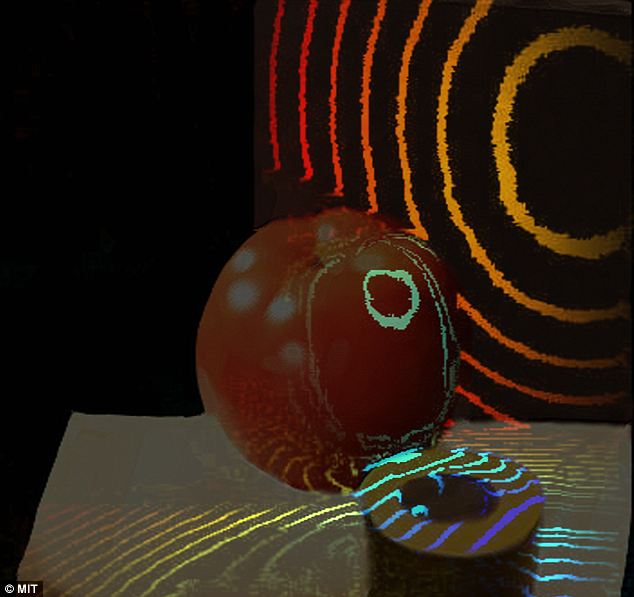
The first stunning images of moving bullets appeared around 50 years ago – now a team of snap happy scientists have trumped that achievement by photographing streaks of light.
Scientists from the Massachusetts Institute of Technology (MIT) needed some very specialised equipment to pull off the feat, as light travels around a million times faster than a bullet.
The team used a camera that collected the light beams at a rate of roughly one trillion frames per second – that’s fast enough to produce a slow-motion video of a burst of light traveling the length of a one-litre bottle, bouncing off the cap and reflecting back to the bottle’s bottom.
‘We have built a virtual slow motion camera where were can see photons, or light particles, moving through space,’ explained Ramesh Raskar, Associate Professor of the MIT Media Lab.
Professor Raskar’s ‘camera’ was actually a single large lens working alongside an array of 500 sensors.
And instead of a regular flash, the researchers deployed a titanium sapphire laser pulse that lasts less than one trillionth of a second.
Media Lab postdoc Andreas Velten, one of the system’s developers, calls it the ‘ultimate’ in slow motion: ‘There’s nothing in the universe that looks fast to this camera,’ he says.
A bullet can be captured in one shot, but to record the nippier light particles the laser is pulsed millions of times a second through a system of mirrors.
The mirrors are then gradually titled around so that the camera lens scans the entire ‘scene’.
The results are spectacular photographs that show how light travels in waves across space.
What’s more, Raskar explains that the technology he’s refining with his team could have several practical uses.
He adds: ‘Such a camera may be useful in medical imaging, in industrial or scientific use and in the future even for consumer photography.
‘In medical imaging now we can do ultrasounds with light, because we can see how light scatters volumetrically inside the body. And in industrial imaging one can use the scattered light to analyse defects in materials.’
RELATED ARTICLES
- WEF Scientists Warn Next Pandemic Will 'Kill Billions'
- Spike Protein Makes Women 'Infertile', Scientists Warn
- Scientists Have Recreated World's Deadliest Flu Virus
- More than 70% of Coronavirus Deaths in Italy are Men, Scientists Baffled
- Scientists Discover HIV-Like 'Mutation' Which Makes Coronavirus Extremely Infectious












To see some other amazing things that camera’s have caught in action. The ten best UFO photos ever taken. All examined by experts, never debunked and no earthly explanation has ever been given!
http://www.educatinghumanity.com/2011/12/ten-best-ufo-photos-ever-taken-alien-et.html